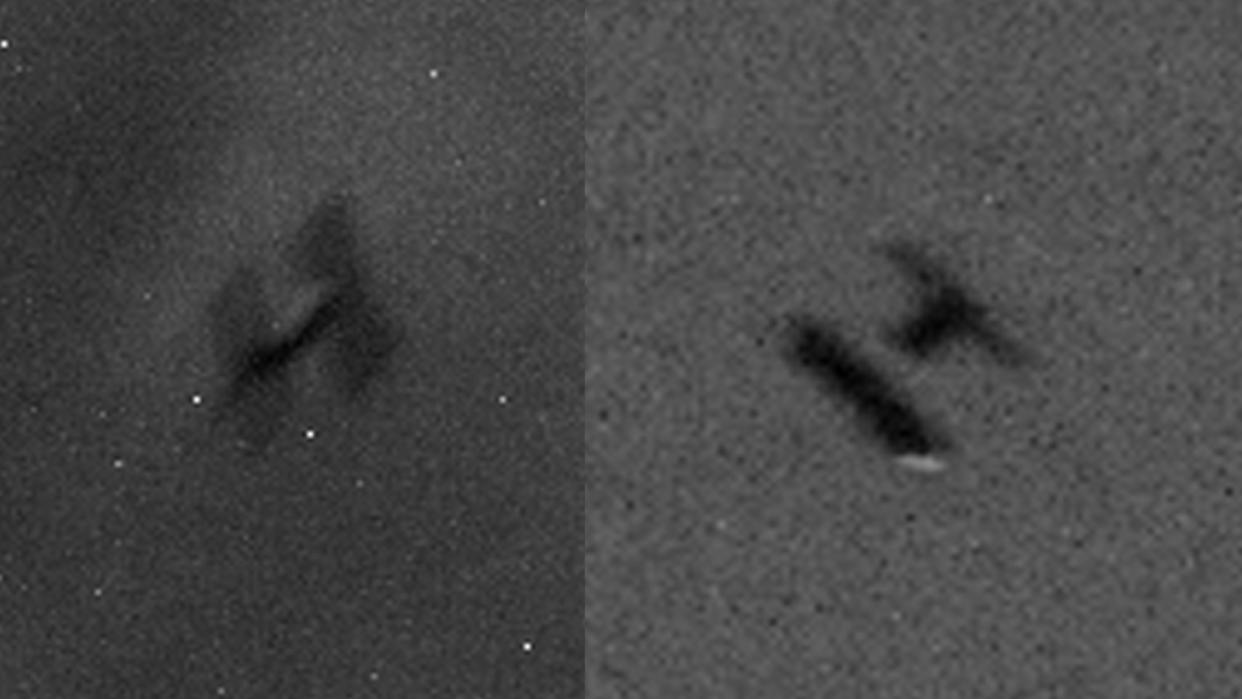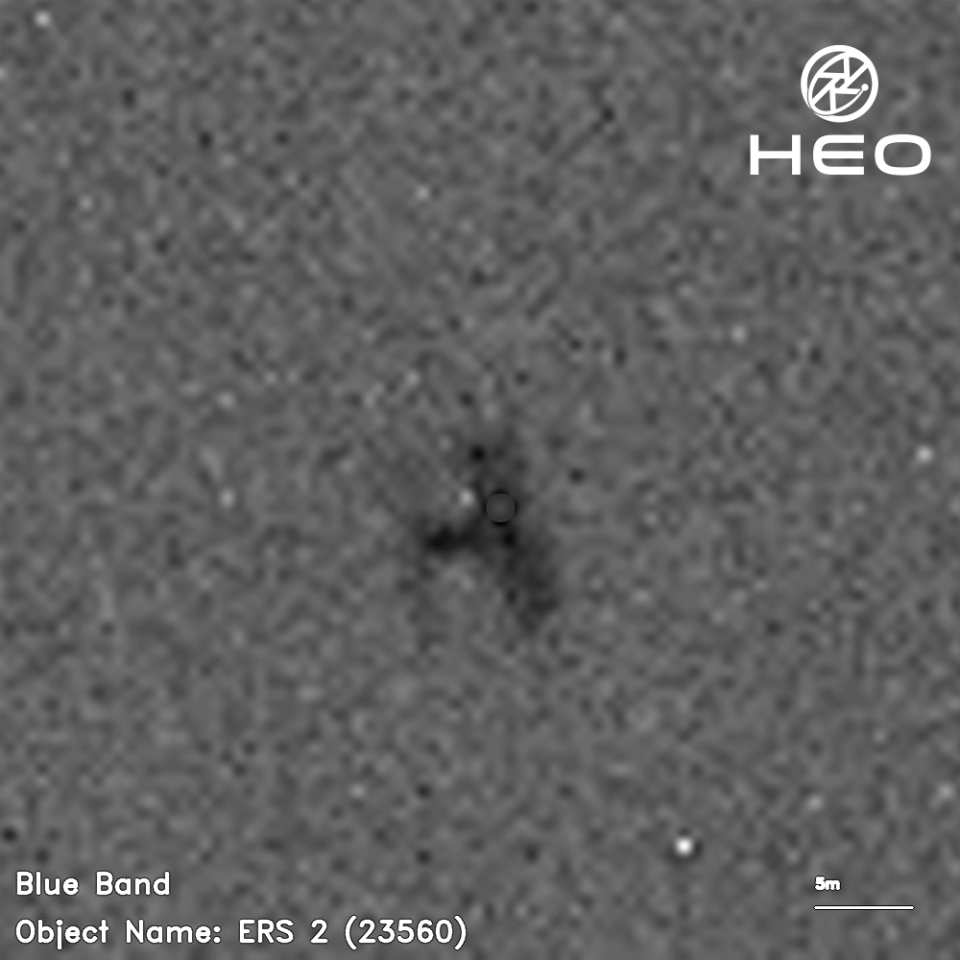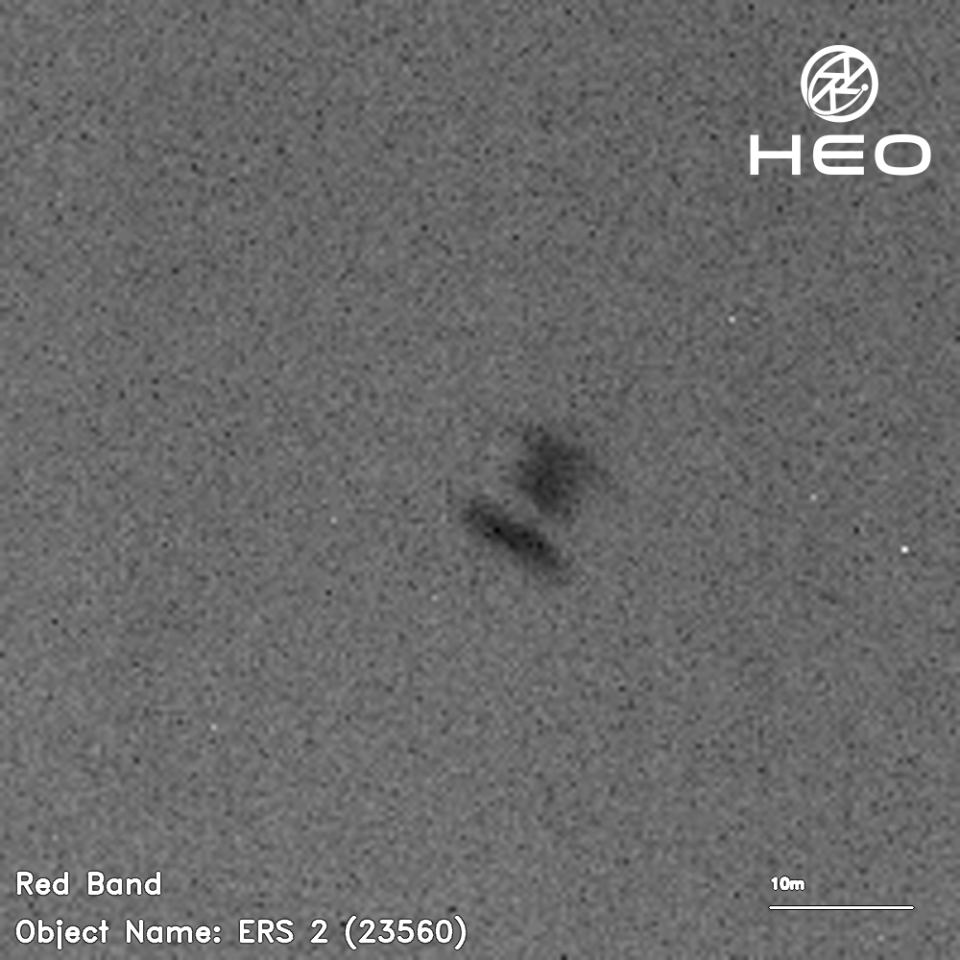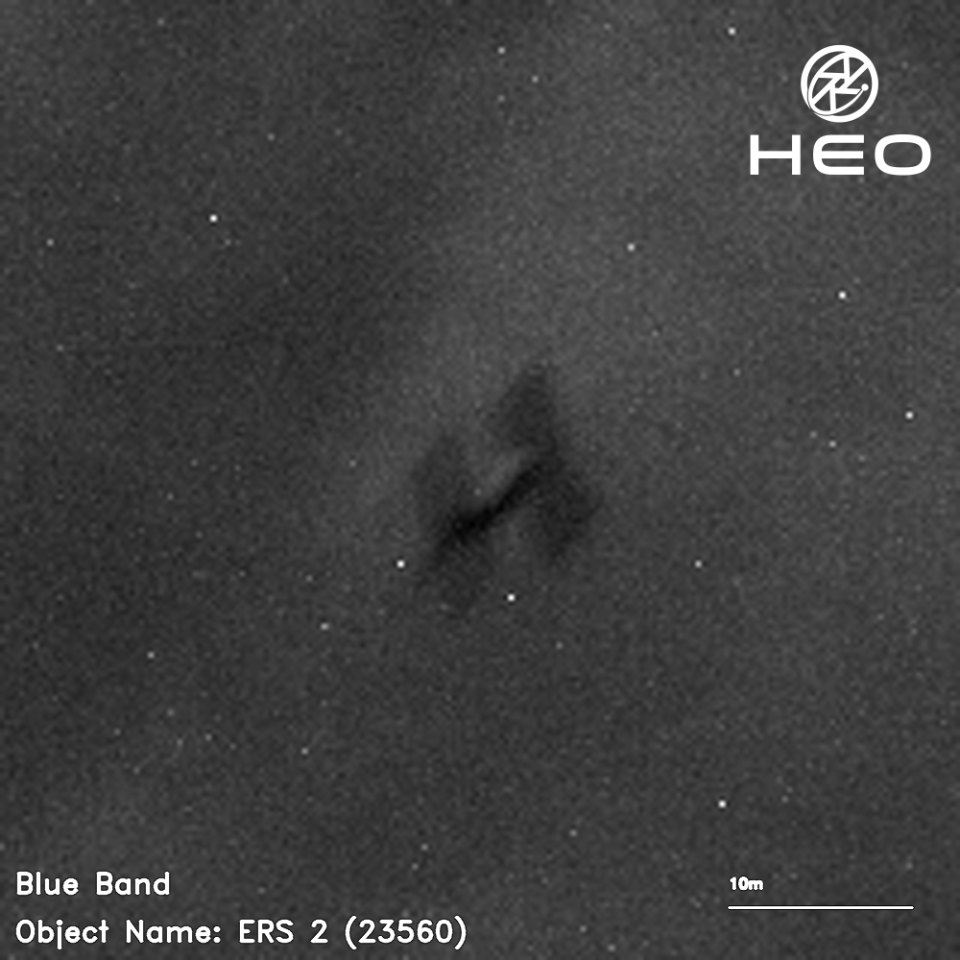Big, doomed satellite seen from space as it tumbles towards a fiery reentry on Feb. 21 (photos)

Photographs taken in space show a big dead satellite as it tumbled towards a fiery end in Earth's atmosphere.
Australian commercial imaging company HEO Robotics was able to capture images of the European Space Agency's (ESA) ERS-2 Earth observation satellite on Feb. 14, 2024 as the satellite made an ungraceful fall towards our planet. ERS-2, or European Remote Sensing 2, launched in 1995 and spent 16 years observing our planet from space until its mission ended in 2011. Over a span of two months that year, ESA performed dozens of deorbiting maneuvers to begin bringing ERS-2 down for a safe demise in Earth's atmosphere. That end is finally due to come this week.
In an update posted on Sunday (Feb. 18), ESA said that the rentry ERS-2 is expected to take place on Wednesday (Feb. 21) at 10:19 a.m. ET (1519 GMT), plus or minus around 19 hours. This uncertainty is due to the "influence of unpredictable solar activity, which affects the density of Earth's atmosphere" and can therefore change how much drag pulls on the satellite on its way down, ESA wrote. It's still too early to tell where it will come down, but we'll have a better idea as the time of reentry gets closer.
Related: Big, dead European satellite will crash back to Earth this month
Such reentry maneuvers are perfectly normal and safe, ESA wrote in a FAQ sheet explaining ERS-2's reentry. ERS-2 already burned up its remaining fuel during the 2011 deorbiting maneuvers, and its descent was carefully planned to ensure it would not collide with other spacecraft or space debris.

"Deorbiting satellites at the end of their life and ensuring they reenter Earth's atmosphere is a fundamental tool in keeping our busy space highways clear from defunct, lingering satellites, preventing collisions in orbit, and mitigating the creation of further space debris," the agency wrote in the FAQ.

ERS-2 "was the most sophisticated Earth-observation spacecraft ever developed and launched by Europe," ESA officials wrote. The satellite weighs 5,047 pounds (2,294 kg) when empty as it is now, pretty large for a piece of space debris.

RELATED STORIES:
— 2 big pieces of space junk nearly collide in orbital 'bad neighborhood'
— Clearspace-1 space debris cleanup target in orbit just got struck by space debris
— Amazing satellite video shows China's space station come together in Earth orbit (video)
But reentries of objects that size aren't uncommon these days. Pieces of space junk of similar mass burn up in Earth's atmosphere every few weeks, according to ESA's FAQ.
ERS-2 is expected to break up into smaller fragments once it reaches about 50 miles (80 km) above Earth, the vast majority of which will burn up in the atmosphere. Some might make their way to Earth's surface, but are expected to fall into the ocean. "None of these fragments will contain any toxic or radioactive substances," ESA wrote.

